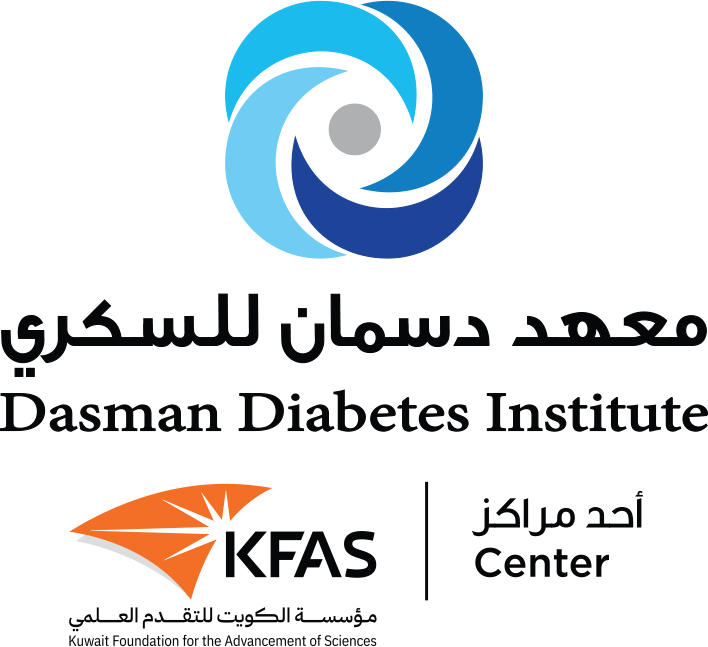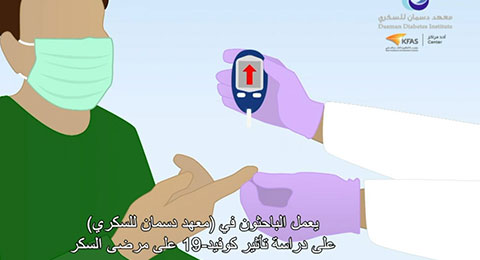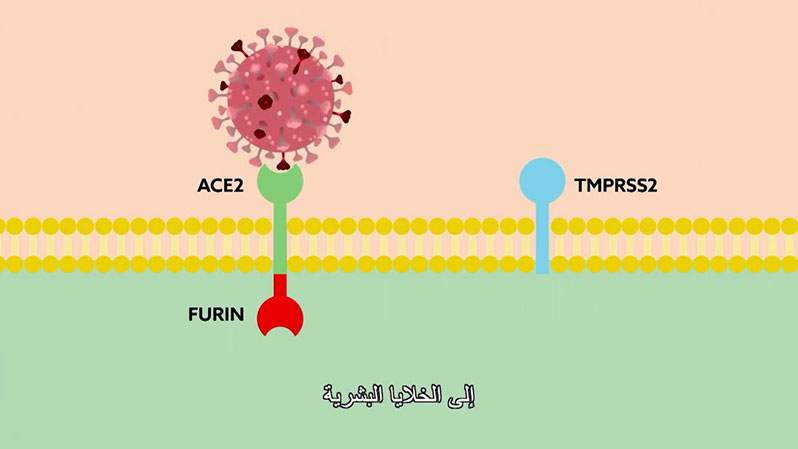DDI scientists presented three oral presentations and eight posters at the American Diabetes Association 84th Scientific Sessions in Orlando, FL, USA. Below are the abstracts from each department, detailing DDI’s most recent research findings.
One abstract and two oral presentations were submitted by the Biochemistry & Molecular Biology department:
Association between PCSK7 Levels and NAFLD Severity in KADEM Study
Mohammad Qaddoumi, Jehad Abubaker, Irina Al-Khairi, Preethi T. Cherian, Devarajan Sriraman, Alphonse T. Thangavel, Arshad M. Channanath, Muhammad Abdul-Ghani, Fahd Al-Mulla, Mohamed Abu-Farha.
Tirzepatide is a dual GLP-1 and GIP receptor agonist that enhances glucose-stimulated insulin secretion and significantly lowers HbA1c as well as weight. SGLT2 has also been shown to reduce weight in addition to their glucose lowering effect. Given their different modes of action we hypothesized that their combination would produce additive improvements in weight loss as well as their glycemic control.
A total of 40 male Sprague Dawley rats aged 6-8 weeks were fed a Normal Diet or high-fat cafeteria diet for 12 weeks. Animals on high fat diet were then divided into four groups treated with either placebo, 100 nmole/kg Tirzepatide, Dapagliflozin 1mg/kg or a combination of Dapagliflozin and Tirzepatide for 6 weeks. Weight, FBG, and calorie consumption were monitored on a weekly basis. The study concluded with the administration of OGTT and ITT tests, followed by the collection of various tissues.
After treatment, animals on normal diet weight of 522.9±11.7g, placebo-treated obese animals were 671.3 ± 26.2g, compared to 598.9 ± 23.4g in dapagliflozin-treated, 532.3±23.0g in Tirzepatide-treated animals, and 480.7± 18.8 g in animals treated with the combination (p<0.001). The addition of dapagliflozin to Tirzepatide resulted in a significant additive improvement in glucose AUC compared to Tirzepatide alone. Moreover, omental, and subcutaneous adipose tissue weight was significantly decreased in animals treated with the combination compared to Tirzepatide alone. In conclusion, the addition of dapagliflozin to tirzepatide resulted in further weight reduction and improvement in glycemic control compared to each drug alone.
miR-103 as a potential inhibitor for dyslipidemia through modulation of ANGPTL8 level
Jehad Abubaker, Preethi Cherian, Irina Al-Khairi, Fahd Al-Mulla, Mohamed Abu-Farha
There is increasing interest in the role of epigenetic factors in obesity and its impact on diabetes and dyslipidemia. Earlier report found that miR-103 suppresses de novo lipogenesis (DNL) and dampens the development of obesity/diet-induced fatty liver through targeting at Fasn and Scd1 genes in mouse liver. On the other hand, lipid regulating hormone angiopoietin-like 8 (ANGPTL8) is a known regulator of triglycerides through its inhibition of the lipoprotein lipase activity through its interaction with ANGPTL3. We aimed to study the miR-103 expression in the blood and adipose tissue in a cohort of obese and non-obese people and confirm its binding and regulation to ANGPTL8. miR-103 expression levels were investigated using RT-PCR in 144 participants, 82 who were non-obese (body mass index [BMI] <30) and 62 who were obese (BMI >30). Overexpression and luciferase assays were used to confirm the binding between miR-103 and ANGPTL8. The plasma levels of ANGPTL8 were also measured by ELISA. The miR-103 levels were significantly lower in obese than in non-obese individuals (P = 0.002). In vitro analysis confirmed miR-103 binding to and repression of the ANGPTL8 transcript and protein. Obesity leads to alterations in miR-103 expression. Its downregulation in obese humans was inversely correlated with ANGPTL8, a protein involved in lipid metabolism. Further, miR-103 plasma levels were inversely correlated with TG levels (P = 0.011), and ANGPTL8 levels were positively correlated with TG levels. miR-103 can be used as an inhibitor of ANGPTL8 to reduce the TG plasma level and mitigate dyslipidemia.
Synergistic Effects of Dapagliflozin and Tirzepatide Combination Treatment on Weight loss and Glucose Regulation in Diet Induced Obese Animals
Mohamed Abu-Farha, Irina Al-Khairi, Mohammad Qaddoumi, Hossein Arefanian, Fahad Alajmi, Nermeen Abukhalaf, Preethi Cherian, Fahd Al-Mulla, Jehad Abubaker, Muhammed Abdul-Ghani
Type 2 diabetes (T2D) and coronary artery disease (CAD), comorbid conditions that present a significant mortality risk, are both systemic diseases linked with altered immune responses. Treatments for these comorbid conditions are not yet satisfactorily developed due to a lack of understanding of their linkage. This study aims to investigate genes co-expressed in T2D and CAD to better understand their common causal relationship and identify potential biomarkers and targets for treatment. We identified differentially expressed genes (DEGs) from patients with T2D and CAD, performing pathway analysis to predict commonalities in signaling pathways and molecular networks attributed to these diseases. Our results revealed 451 DEGs in T2D and 644 DEGs in CAD patients compared with healthy controls, with 32 DEGs shared between the two conditions. These common DEGs mapped significantly to shared pathways, suggesting their role in the association between T2D and CAD. Key genes within this network, including TLR4, IGF1, UBB, MAPK1, CCND1, MYC, JUN, and MMP9, showed acceptable diagnostic power in T2D and CAD datasets. We also predicted the miRNAs and transcription factors regulating these key genes. Our findings provide insights into the molecular links between T2D and CAD, highlighting potential biomarkers and therapeutic targets. However, further experimental validations and clinical trials are necessary to confirm these results.








